Natural lighting in photos can give off a pure vibe that artificial lighting often has trouble providing for you. There are several techniques you can use when using natural light photography. The lighting of the sun can create many stunning spectrums of colors throughout the day that could result in beautiful photos. However, with this in mind you shouldn’t just run outside and start snapping as many photos as you can without putting some thought behind them first. There are some aspects of taking photos using natural light that you should probably be aware of.
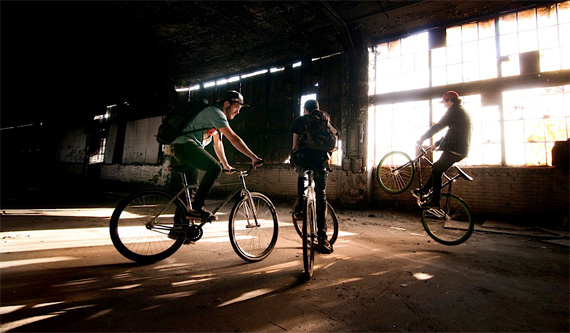
Natural Light flows through the shattered and broken windows at the Packard Plant in Detroit, Michigan.
Natural light can be tricky sometimes, so you may have to toy around with your cameras settings to get the exact lighting you’re looking for. Most digital cameras come with different settings that are beneficial to use when attempting to take pictures in natural light. Natural light can be changed using your cameras settings in many ways depending on what it looks like outside – if it is unbearably sunny out, you probably don’t want to use flash. However, if the image you are looking to produce looks better with the flash, then by all means, use it.
Get used to trying out different ways of using natural light, because this is the best way to figure out what kind of pictures you think look best. Lighting is a fun aspect of photography to play with, even when you’re not sure what you’re doing. Experimenting with natural light is a fun way to find techniques that you enjoy using.
How the Time of Day Affects Natural Light
As you probably already know, different times of day means the sun is in different parts of the sky. The lighting during whatever time of day you choose to take photos will determine where the shadows in the photo lay.
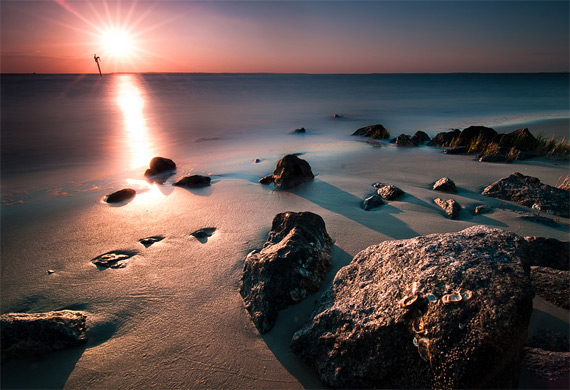
Had I taken this shot just 15 minutes earlier (or later) the natural light from the sun wouldn’t have given me the shadows or reflections off the rocks I was looking to for.
Shadows from natural light alone can make a photo look stunning or awkward – for example, say the lighting of the sun was coming from directly above your subject. If this subject was a girl, she might look like she has a goatee from the shadow of her chin onto her neck. Maybe your female subject actually does have a goatee, but if she doesn’t I don’t imagine you (or she) wants to make it seem like she does. That’s awkward. On the other hand, if you take a photo of the same girl around the time the sun was setting, the natural light will be more golden at this time giving her fresh and glowing skin. It all depends on the techniques you, your camera, and your subject can work with using the lighting.
Using Shadows with Natural Light
Shadowing in natural light photography can often set “moods” of the photo. Heavy shadowing techniques in photos can depict a dark, heavy mood. If you limit the colors in the photo, it can be seen as even darker.
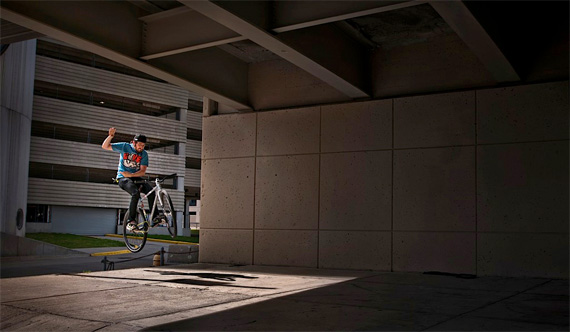
The combination of the light coming from the sun and the shadow of Shea underneath him, along with the heavy, graduating shade from under the overpass create a 3-D-like sense in this photo.
Also, light shadowing effects can provide a more happy mood and also provide a sense of “realism” by making the photo seem more 3-D. Lighting and shadows using natural light can be played around with to set the mood that you’re looking for.
Shooting Indoors With Natural Light
You don’t have to be outside to use natural light photography, either. Techniques you can use for using natural light can be found inside, too (side note: these techniques are the best option for vampire photographers who melt in direct sunlight.) For instance, take pictures of your subject near a window.
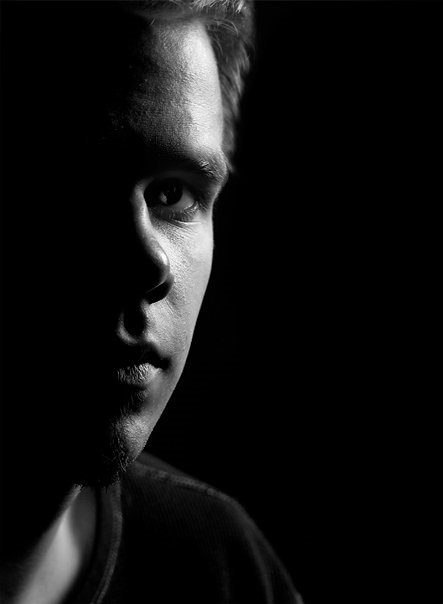
This self-portrait of me was taken in front of a window on a sunny day. I exposed for the highlights on my face to ensure the shadows would be dark.
If the window itself isn’t generating enough light, try placing a mirror in a spot where it can reflect the light. This technique is helpful on really hot days where, if your subject is a person, your subject won’t sweat and potentially ruin the effect you were going for. The same goes for cold weather; if your intention wasn’t to photograph an ice cube, then you may want to consider using techniques for natural light.
Cloudy Days Diffuse Natural Light
Natural light doesn’t necessarily have to be taken when it’s sunny outside. Cloud coverage can often provide adequate lighting for subjects that may need a paler natural light, or even darker lighting, depending on what kind of cloud coverage we’re talking about. You won’t get as heavy of shadows when taking pictures in overcast weather, but depending on the mood you’re trying to set that might be just what you need.
The result of your photo while trying natural light photography may also have something to do with the background of your photo. If it’s sunny outside, but snow is covering the ground, the lighting in your photo may appear much brighter than if it was just green grass. Some interesting techniques for this scenario is to place a dark subject in the snow for high contrast using natural light.
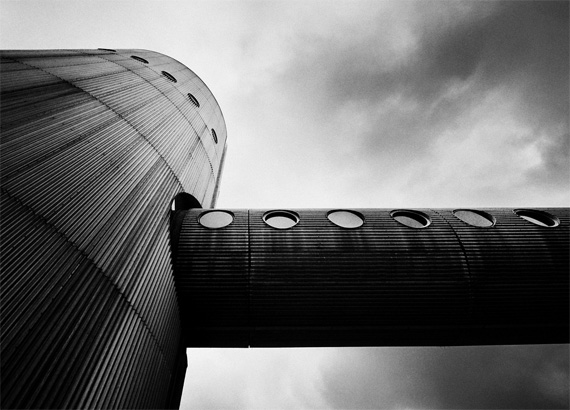
This steel structure in Detroit shows well with soft light on a cloudy day. The clouds also set a stark, dark mood to the photo.
Natural light photography has many techniques that you can use to manipulate natural light. Some of the most striking and beautiful photos come from using natural light. If you’re a beginner to using natural light in your photos, try out several different techniques. Write them down so you can keep trying them out and finding out what’s best for you! That’s what photography is all about!
About the Author:
Tim Kainu is a photographer, digital artist and graphic designer currently based in the little town of Berkley, Michigan. You can find him and see more of his work at his website which offers beginner photography tips. He classifies himself as an unconventional, non-traditional photographer where digital is his medium of choice. He likes to create images that would be impossible to create without the use of digital manipulation.
Like This Article?
Don't Miss The Next One!
Join over 100,000 photographers of all experience levels who receive our free photography tips and articles to stay current:






Am I allowed to use your article in my class?
yea, window is kind of interstin… I will keep my eye on it˜˜˜
A nice article. But after reading the whole article I only came to know that in natural light good photos can be taken by changing camera setting appropriately. But no example has been given, what kind of setting will be more appropriate in which situation.
Hi Miraj,
Glad to hear you thought the article was nice. Your point is valid. Another article will be written and posted on my website in the future to better help understand the camera settings to be used in different lighting situation. This article was more for the absolute basics of natural light.
I’ll make sure to include how to meter, and what modes and settings are best used in different situations as best as possible in the next article :)
Great post but any tips on how to meter well for natural light … ?
Hi Shane,
Thanks for the compliment. I understand there aren’t any “technical” tips as far as what settings to use. That’s a whole other article that will be written and posted on my website in the future. Sorry for not providing it in this article :(
Shane,
You may find the following video, ‘Measuring and Evaluating Light in Landscape Photography’, of great interest:
http://youtu.be/v3HPX76kGzc